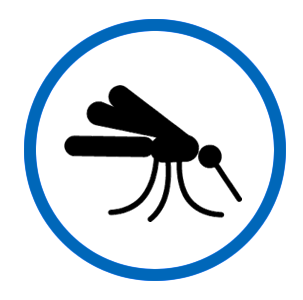Intermittent preventive treatment of malaria in pregnancy reduces incidence of low birth weight by 29%, severe maternal anemia by 38% and neonatal mortality by 31%. This is a periodic behavior that needs to be practiced at every ANC visit.1Investing in Malaria in Pregnancy in Sub-Saharan Africa: Saving Womens and Childrens Lives

Intermittent Preventive Treatment of Malaria in Pregnancy
Pregnant women take intermittent preventive treatment of malaria (IPTp) during antenatal care (ANC) visits
Key Points from Global Research
- Pregnant women’s knowledge about the protective benefits of IPTp for herself and her unborn child coupled with provider skill on correct timing and dosing can contribute to an increase in this cost-effective and easily administered intervention beginning in the second trimester.
Behavior Profile Sample: Intermittent Preventive Treatment of Malaria in Pregnancy
A Behavior Profile is a summary analysis of each behavior. This sample draws from global evidence and illustrates the result of using the Create Behavior Profiles Tool to analyze factors, supporting actors and strategies and to ensure logical pathways exist between strategies proposed and factors related to the practice of the behavior. This sample may be used as a starting point or reference for creating Behavior Profiles.
| Improve maternal and child survival | |
|
Pregnant women take intermittent preventive treatment of malaria (IPTp) during antenatal care (ANC) visits Percentage of women age 15-49 with a live birth in the two years preceding the survey who during the pregnancy took 3 or more doses of SP/Fansidar, with at least one dose during an antenatal care visit
Percentage of women age 15-49 with a live birth in the two years preceding the survey who during the pregnancy took 2 or more doses of SP/Fansidar, with at least one dose during an antenatal care visit |
Behavior Analysis |
Strategy | ||
|---|---|---|---|
STEPSWhat steps are needed to practice this behavior?
Click on any box |
FACTORSWhat factors may prevent or support practice of this behavior? These should be analyzed for each country context.StructuralAccessibility: Fansidar/SP is often out of stock or rationed Service Provider Competencies: Lack of provider knowledge including when to begin IPTp further confuses women and their family SocialFamily and Community Support: Often family members or partners do not consent to multiple ANC visits Family and Community Support: IPTp is seldom endorsed or promoted by community-based service providers InternalAttitudes and Beliefs: Many women fear side effects Attitudes and Beliefs: Women and families often motivated by idea of treatment more than prevention Attitudes and Beliefs: Many women are unaware of the protective benefits of IPTp to themselves and their unborn child |
SUPPORTING ACTORS AND ACTIONSWho must support the practice of this behavior?InstitutionalPolicymakers: Ensure integration of IPTp with broader reproductive health programs Logistics Personnel: Ensure SP or other IPTp commodity supply Providers: Provide clear counseling about protective benefits, timing and dosing of IPTp to pregnant women and their partners |
POSSIBLE PROGRAM STRATEGIESHow might we focus our efforts based on this analysis?Enabling EnvironmentPartnerships and Networks: Explore delivery of ANC and IPTp in non-formal settings, such as through NGOs and by community health workers, directly in the community where ANC is inaccessible Policies and Governance: Integrate IPTp into reproductive health programs Systems, Products and ServicesSupply Chain: Strengthen commodities and supply chain for Fansidar/SP or IPTp protocol at all levels to plan for at least 4 doses per expected pregnant woman Quality Improvement: Disseminate to providers clear IPTp guidelines and information to use in counseling women on benefits Quality Improvement: Expand and promote services offered during ANC to increase perceived value, including treatment for RTIs Demand and UseCommunication: Use appropriate communications approaches to reposition value of preventive services to mother and unborn child |
Global Status of Accelerator Behavior
Percentage of women age 15-49 with a live birth in the two years preceding the survey who during the pregnancy took 3 or more doses of SP/Fansidar, with at least one dose during an antenatal care visit
Demographic and Health Survey, Malaria Indicator Survey
